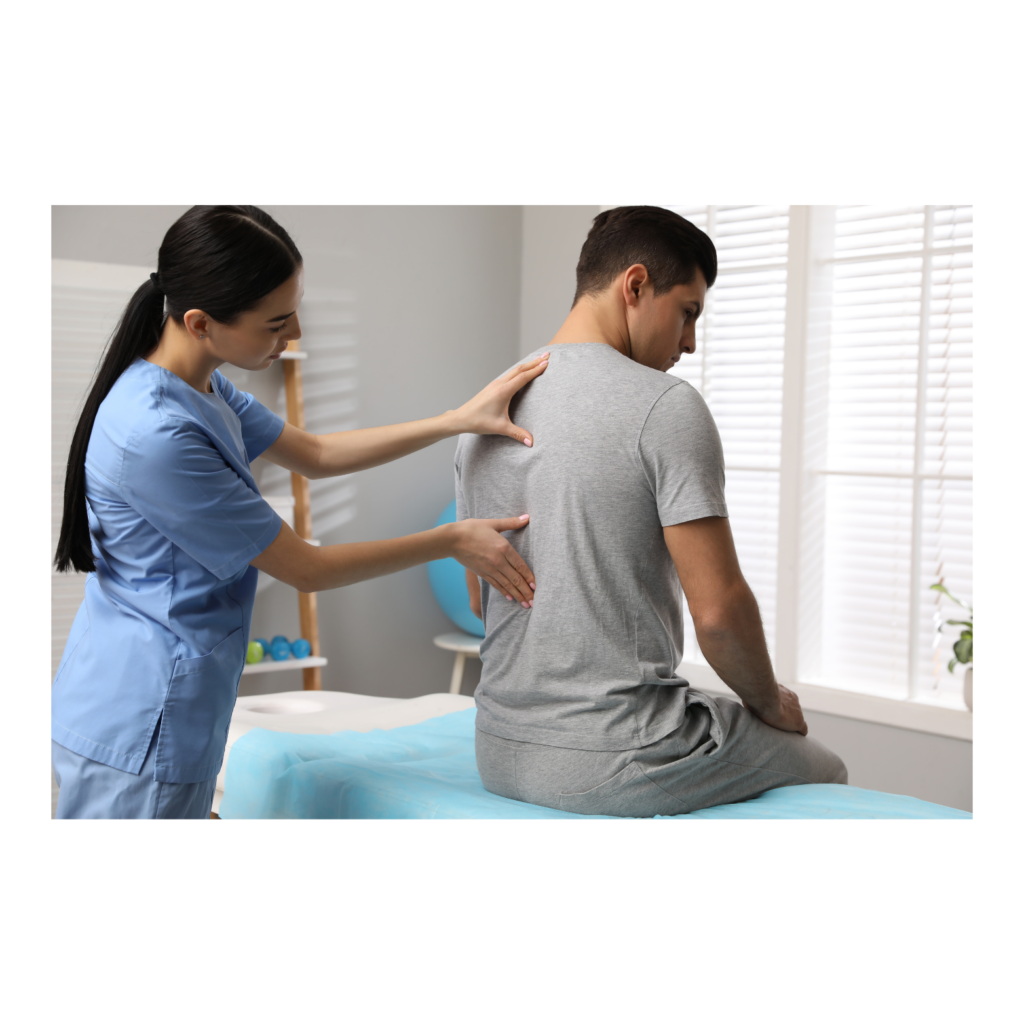Scoliosis Posture
Understanding Scoliosis: Causes, Symptoms, Diagnosis, and Management
Scoliosis is a condition characterized by an abnormal curvature of the spine, often in a sideways or rotational manner. This article provides a comprehensive overview of scoliosis, including its causes, symptoms, diagnosis, and management options, to enhance understanding and awareness.

What is Scoliosis?
Scoliosis is a musculoskeletal disorder characterized by an abnormal curvature of the spine, typically manifesting as a sideways curvature (lateral curvature) or rotational deformity. The curvature can vary in severity and location along the spine, commonly affecting the thoracic (upper back) or lumbar (lower back) regions. In some cases, scoliosis may also involve the cervical spine (neck).
Causes of Scoliosis:
Several factors contribute to the development of scoliosis:
Idiopathic Scoliosis: This is the most common type, accounting for about 80% of cases, and usually occurs in adolescents during growth spurts. The cause is unknown (idiopathic), but genetics likely play a role as it tends to run in families.
Congenital Scoliosis: Present at birth, congenital scoliosis results from abnormal spinal development in the womb. It occurs due to vertebrae that are malformed or fused together, leading to curvature.
Neuromuscular Conditions: Conditions such as cerebral palsy, muscular dystrophy, or spinal muscular atrophy can cause muscles supporting the spine to be weak or imbalanced. This weakness contributes to an abnormal spinal curvature.
Degenerative Scoliosis: This type typically occurs later in life due to degenerative changes in the spine, such as arthritis (spondylosis) or osteoporosis, which weaken the spinal structures and lead to curvature.
Symptoms of Scoliosis:
Signs and symptoms associated with scoliosis may include:
Visible Spinal Curvature: When viewed from the back, the spine may appear curved, resembling an “S” or “C” shape.
Uneven Shoulders or Hips: One shoulder or hip may appear higher than the other, indicating asymmetry caused by the spinal curvature.
Uneven Waist: The waistline may appear uneven or tilted to one side due to the spinal curvature.
Back Pain: Persistent or intermittent pain in the back, especially as the curvature progresses and affects spinal alignment and muscle strain.
Limited Mobility: Difficulty moving or performing daily activities due to the impact of spinal curvature on posture and muscle function.
Diagnosis of Scoliosis:
Diagnosing scoliosis typically involves a comprehensive evaluation, including:
Physical Examination: A healthcare provider conducts a thorough examination, assessing spinal alignment, shoulder symmetry, hip levels, and rib cage protrusion when bending forward (Adam’s forward bend test).
Imaging Studies: X-rays provide detailed images of the spine, allowing measurement of the curvature’s angle (Cobb angle). These images also help to determine the location, extent, and type of scoliosis.
Neurological Evaluation: If scoliosis is associated with neuromuscular conditions, a neurological assessment may be conducted to evaluate nerve function and detect any neurological deficits.
Management and Treatment Options for Scoliosis:
Treatment for scoliosis aims to manage symptoms, prevent progression of the curvature, and improve overall spinal health. Management options depend on factors such as the severity of curvature, age of the patient, and potential for progression:
Observation: Mild cases of scoliosis may only require regular monitoring to assess curvature progression, especially in adolescents who are still growing.
Bracing: For moderate scoliosis in growing children and adolescents, a brace may be prescribed to prevent further curvature progression. The type and duration of bracing depend on the individual’s age, degree of curvature, and skeletal maturity.
Physiotherapy: A crucial component of scoliosis management, physiotherapy focuses on:
Exercise Prescription: Designing personalized exercise programs to strengthen core muscles (abdominals, back extensors), improve spinal flexibility, and promote balanced muscle development around the spine.
Postural Correction: Teaching proper posture techniques and ergonomic principles to minimize the impact of scoliosis on daily activities and improve overall alignment.
Manual Therapy: Providing hands-on techniques such as mobilization, soft tissue massage, or myofascial release to alleviate muscle tension, improve joint mobility, and facilitate better spinal alignment.
Surgery: In severe cases of scoliosis, or when the curvature progresses despite conservative measures, spinal fusion surgery may be recommended. Surgery aims to straighten the spine, stabilize it with implants (such as rods and screws), and prevent further curvature progression.
Pain Management: Modalities such as heat therapy, ice packs, or over-the-counter pain-relieving medications may be used to alleviate discomfort associated with muscle strain and spinal curvature.
Physiotherapy for Scoliosis:
Physiotherapy plays a crucial role in managing scoliosis by:
Education: Educating patients and their families about scoliosis, including its causes, potential progression, and the importance of adherence to prescribed treatments.
Exercise Prescription: Designing individualized exercise programs tailored to the patient’s specific curvature, age, and functional abilities. Exercises focus on strengthening core muscles, improving spinal flexibility, and promoting optimal posture.
Postural Re-Education: Teaching proper body mechanics and ergonomic principles to promote spinal alignment during daily activities, reducing strain on the spine and supporting muscles.
Manual Therapy: Providing hands-on techniques to address muscle imbalances, release tight muscles, and improve joint mobility, thereby enhancing overall spinal function and alignment.
Conclusion:
Scoliosis is characterized by an abnormal curvature of the spine, which can vary in severity and location. Early diagnosis and intervention are essential for managing scoliosis effectively and preventing potential complications. Physiotherapy, along with other treatment modalities, plays a crucial role in providing personalized care, improving spinal health, and enhancing overall quality of life for individuals with scoliosis. Collaborating closely with healthcare professionals ensures comprehensive management tailored to the individual needs of each patient, promoting long-term spinal health and well-being.
Ready to start your journey to recovery? Contact us
Appointment
Have a question?
Call us on +91 8448945434 or simply book an appointment with us